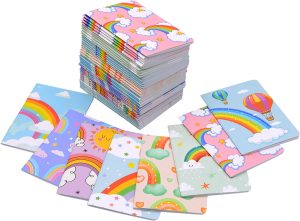Booklets can indeed serve as a bridge between tradition and innovation, offering a blend of old and new approaches that cater to different preferences and needs. Here’s how booklets can fulfill this role:
- Traditional Format with Modern Content: Booklets are a classic format that many people are familiar with, evoking a sense of nostalgia and tradition. By combining this traditional format with modern and innovative content, such as cutting-edge research, technology insights, or contemporary art, you create a unique juxtaposition that appeals to a diverse audience.
- Tactile Experience in a Digital World: In an age dominated by digital media, booklets provide a tactile experience that engages multiple senses. People appreciate the tactile feel of paper, the scent of ink, and the act of physically flipping through pages. This sensory engagement can enhance the overall reading experience and create a deeper connection to the content.
- Concise Information Delivery: Booklets often focus on concise and focused content. They’re well-suited for delivering quick and relevant information, making them an effective tool for communicating innovative ideas, new concepts, or summaries of larger bodies of work.
- Sustainability and Innovation: When produced using eco-friendly practices, booklets exemplify the harmonious coexistence of tradition and innovation. The use of sustainable materials, inks, and printing methods aligns with modern concerns about environmental impact and responsible consumption.
- Hybrid Publishing Models: Booklets can be part of hybrid publishing models that combine traditional print with digital components. For example, a booklet might contain QR codes or augmented reality elements that link to additional digital content, creating an interactive and multidimensional reading experience.
- Showcasing Artistry: Booklets provide an artistic canvas for creative expression. Artists, designers, and photographers can use booklets to display their work in a tangible format that captures their artistic vision.
- Educational Tools: Booklets can be used in educational settings to introduce students to new ideas and concepts. They can bridge the gap between traditional textbook learning and modern digital resources.
- Event Souvenirs and Keepsakes: Booklets are commonly used as event programs, conference materials, and exhibition guides. These booklets serve as both functional guides and memorable keepsakes that attendees can take home.
- Niche and Specialized Content: Booklets are particularly effective for niche or specialized topics that might not warrant a full-length book. They allow you to explore innovative ideas or address specific audiences without the commitment of a lengthy publication.
- Personal and Intimate Communication: The physical nature of booklets lends itself to more personal and intimate communication. Personalized booklets can be used for wedding invitations, family histories, or company milestones, fostering a sense of connection.
In essence, booklets represent a versatile medium that can adapt to various purposes while encapsulating the essence of both tradition and innovation. By carefully considering content, design, and distribution strategies, you can create booklets that resonate with a wide range of audiences and bridge the gap between the past and the future.


























